Meet the Japanese Royal Family: All About the Imperial House of Japan
- Oops!Something went wrong.Please try again later.
- Oops!Something went wrong.Please try again later.
- Oops!Something went wrong.Please try again later.
- Oops!Something went wrong.Please try again later.
- Oops!Something went wrong.Please try again later.
- Oops!Something went wrong.Please try again later.
- Oops!Something went wrong.Please try again later.
- Oops!Something went wrong.Please try again later.
- Oops!Something went wrong.Please try again later.
Emperor Naruhito has led Japan’s royal family since his father’s abdication in 2019
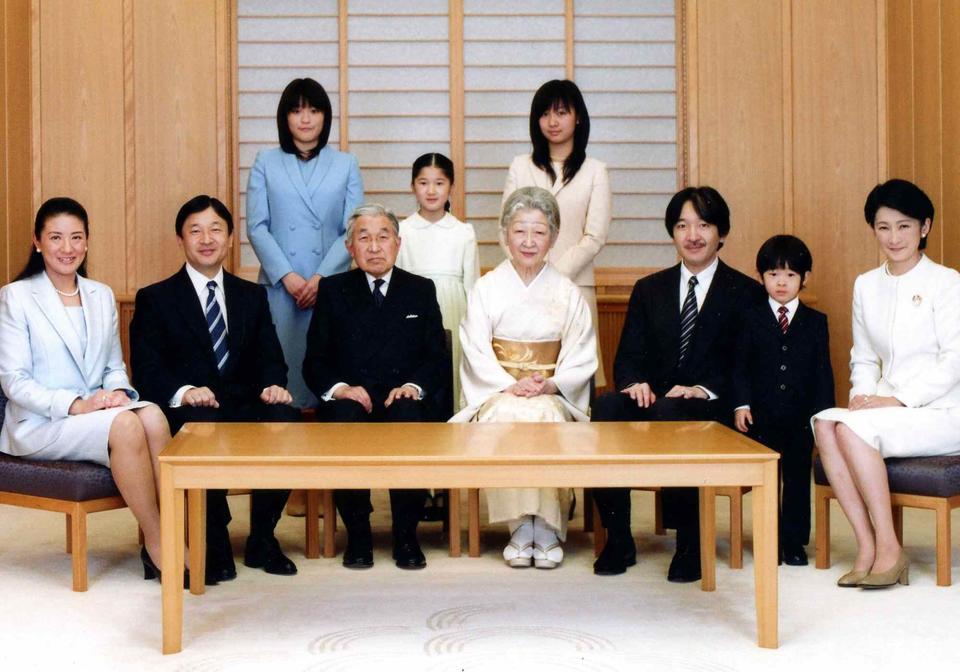
Meet Japan's royal family!
The Japanese imperial family is thought to be the oldest hereditary royal family in the world, dating back as early as 97 B.C. with Emperor Sujin's reign. The current head of the monarchy is Emperor Naruhito, the 126th emperor who ascended to the Chrysanthemum Throne after his father, Emperor Emeritus Akihito, abdicated in 2019. There are currently only 17 members in the royal family.
Akihito — the first Japanese royal to abdicate in 200 years — is credited with modernizing the emperor's role and helping to repair Japan's reputation on the global stage following World War II. Naruhito is expected to continue his father's legacy of representing Japan worldwide and breaking down walls between royalty and the Japanese people.
During his accession speech, Naruhito paid tribute to his father. He made reference to continuing in his father's unifying aims, saying he would "bear in mind the path trodden by past emperors," according to the BBC. "I sincerely hope for the happiness of the people and further progress of the country, and for world peace," he said.
The imperial family is deeply steeped in tradition. For generations, the emperors of Japan were seen as direct descendants of the sun goddess Amaterasu, but after Japan surrendered in World War II, Emperor Hirohito renounced his divinity. The monarchy's official roles are ceremonial under the Constitution of Japan: They have no government roles or political power, and they are not allowed to make political statements.
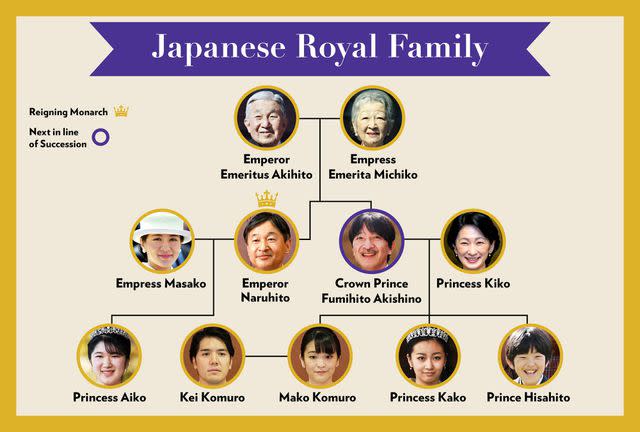
They are also one of the last royal families to prohibit female successors. This was not always the case in Japan — there have been eight empresses regnant throughout history — but the Imperial Household Law introduced in 1947 restricts the throne to the male line of succession and requires women who marry outside of the family to leave. Akihito's only daughter, Sayako Kuroda, left in 2005 when she married a commoner, and former Princess Mako made headlines in 2021 when she left and moved with her husband, Kei Komuro, to the U.S., drawing comparisons to Prince Harry and Meghan Markle.
"As for the comparison [to Harry and Meghan], I don't have any particular thoughts," Mako told reporters after her wedding. "I am not considering giving any interviews at the moment. What I would like is just to lead a peaceful life in my new environment."
There have been discussions in recent years for legislators to modernize the laws around male-only succession and women with non-royal spouses. These conversations may be of particular interest to Naruhito and his wife, Empress Masako, as they only have one child: daughter Aiko, Princess Toshi.
Under the current law, the throne will not succeed to her but to Naruhito's younger brother, Fumihito, Crown Prince Akishino. Second in line for the throne is the crown prince's youngest child and only son, Prince Hisahito, and third is Emperor Emeritus Akihito's 87-year-old brother Masahito, Prince Hitachi. There are no other remaining heirs.
From the reigning emperor to the younger members who will define the future, here's everything to know about Japan's royal family.
Emperor Emeritus Akihito
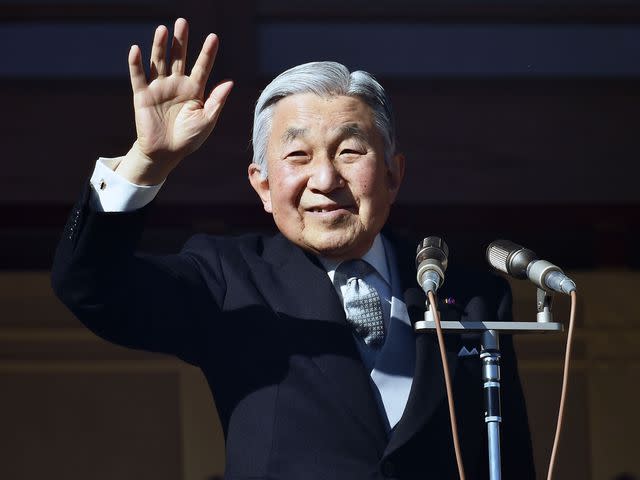
Emperor Emeritus Akihito was the 125th emperor of Japan and reigned from January 1989 until his abdication in April 2019; he relinquished his duties due to his age and declining health, making him the first Japanese monarch to step down since 1817. He was preceded by his father, Emperor Shōwa, and succeeded by his son, Emperor Naruhito.
Born in Tokyo on Dec. 23, 1933, Akihito had six siblings. He wed Michiko Shōda — the first non-royal to marry into the family, per the BBC — in 1959, and they had three children: sons Naruhito and Fumihito and daughter Sayako Kuroda (formerly Princess Nori), who left the royal family in 2005 after marrying a commoner.
When Akihito took the throne after his father's death in 1989, he made it his mission to bring the royal family closer to the people of Japan, visiting all 47 of the country's prefectures and many remote islands over the years. His reign was named the Heisei era, with "Heisei" being a portmanteau intended to mean "peace everywhere." After his death, he will be posthumously renamed Emperor Heisei, as is customary.
Empress Emerita Michiko
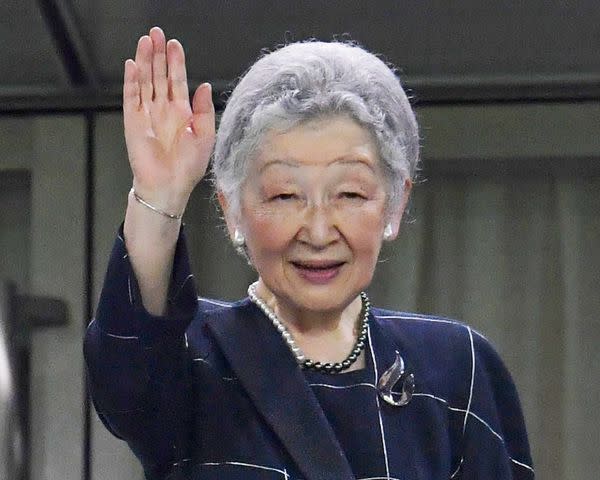
Born in Tokyo on Oct. 20, 1934, to a wealthy family, Empress Emerita Michiko (née Shōda) was a literature student at the University of the Sacred Heart when she met then-Crown Prince Akihito on a tennis court in 1957. Her relationship with Akihito initially came under scrutiny, as her family was Roman Catholic, while the imperial family is historically Shinto. Akihito's mother, Empress Kōjun, opposed their engagement. Regardless, the pair married in 1959, making her the first commoner to marry into the royal family.
Michiko and Akihito are seen as modernizers of the imperial family. They often broke from tradition, including raising their three children on their own rather than leaving them in the care of private tutors. Michiko took over as honorary president of the Japanese Red Cross Society after her mother-in-law's death in 2000 and took care of the palace's silkworms. She made Vanity Fair's International Best-Dressed List Hall of Fame in 1990.
Emperor Naruhito
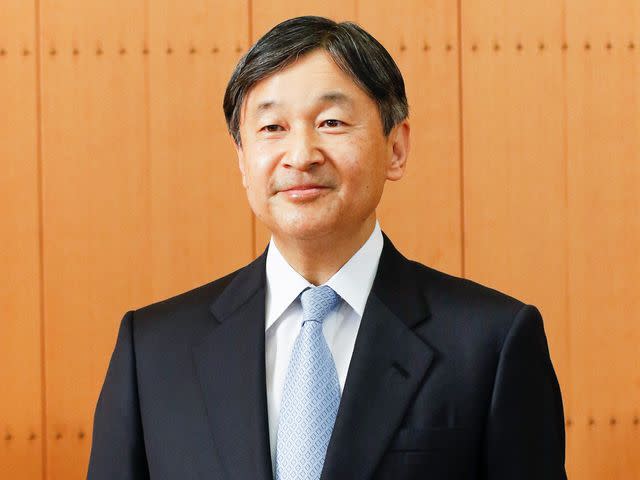
The firstborn son of Akihito and Michiko, Emperor Naruhito was born on Feb. 23, 1960. He was given the royal title Prince Hiro. Like most royals, he was educated in the elite Gakushūin school system and completed a homestay in Australia at 14. He returned to Japan to finish high school and later studied history at Gakushūin University and English at the University of Oxford's Merton College.
Naruhito met his wife, Masako Owada, at a tea ceremony in 1986 when she was studying at the University of Tokyo. He became the crown prince in 1991 when his father ascended the throne. Naruhito and Masako wed in 1993 and share one daughter, Aiko, Princess Toshi, born in 2001.
Naruhito acceded the throne in May 2019, becoming the country's 126th monarch and beginning the Reiwa era in Japan. The name "Reiwa" was taken from Man'yōshū, Japan's oldest poetry collection, according to NPR, and roughly translates to "beautiful harmony" in English. This broke the tradition of era names being drawn from classical Chinese texts.
In his first public address after taking the throne, Naruhito paid tribute to his father and pledged to follow in his footsteps.
"[Akihito] showed profound compassion through his own bearing," he said, according to the BBC. "I swear that I will reflect deeply on the course followed by the Emperor Emeritus ... and fulfill my responsibility as the symbol of the state and of the unity of the people of Japan."
Naruhito, then the crown prince, was a patron of the 1998 Winter Olympics and Paralympics in Nagano, Japan; he was also the honorary president of the 2020 Summer Olympics and Paralympics in Tokyo. In his spare time, he plays the viola.
In February 2023, Naruhito gave his first public birthday address since ascending the throne after several COVID-19 pandemic delays. Appearing on a palace balcony in front of thousands of well-wishers, the emperor was joined by his wife Masako and daughter Aiko, along with his brother Akishino and his wife and daughter, per Reuters.
Empress Masako
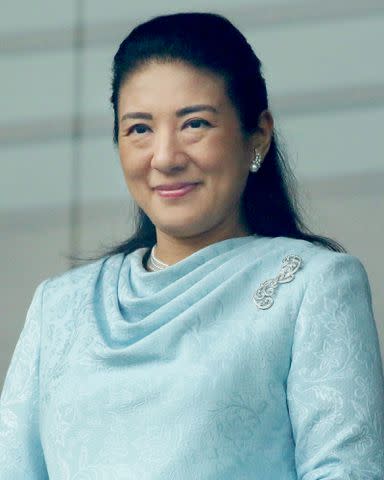
The current empress of Japan was born Masako Owada in Tokyo on Dec. 9, 1963; her father, Hisashi Owada, was a diplomat, law professor and former judge on the International Court of Justice. Masako spent parts of her childhood in Moscow, Tokyo and Boston.
Masako graduated with a degree in economics from Harvard University in 1985. She studied law in Tokyo in order to work as a diplomat with Japan's Ministry of Foreign Affairs. As a diplomat, she spent time at Oxford's Balliol College.
She met Naruhito at a tea ceremony for Princess Elena of Spain in 1986, while Masako was studying at the University of Tokyo. Though she rejected Naruhito's proposals twice, she eventually accepted his third proposal in January 1993 and subsequently resigned from her job.
Japan's future emperor and empress wed in June 1993 and welcomed their only child, daughter Aiko, in 2001. In the early 2000s, Masako withdrew from official royal duties after being diagnosed with adjustment disorder, per the BBC, which is typically an emotional or behavioral reaction to a change in one's life or a stressful event. Both she and her husband took active roles in raising their daughter, and the emperor has defended his wife from criticism that she has ignored her public responsibilities, per the BBC.
Masako slowly returned to public engagements following the earthquake and tsunami that hit Japan in March 2011. Two years later, she made her first trip overseas in more than a decade to the Netherlands.
Just ahead of becoming empress in 2019, she admitted to feeling "insecure," despite wanting to embrace her new role. "I want to devote myself to the happiness of the people," she said. "So I will make efforts to that end while gaining more experience."
Aiko, Princess Toshi
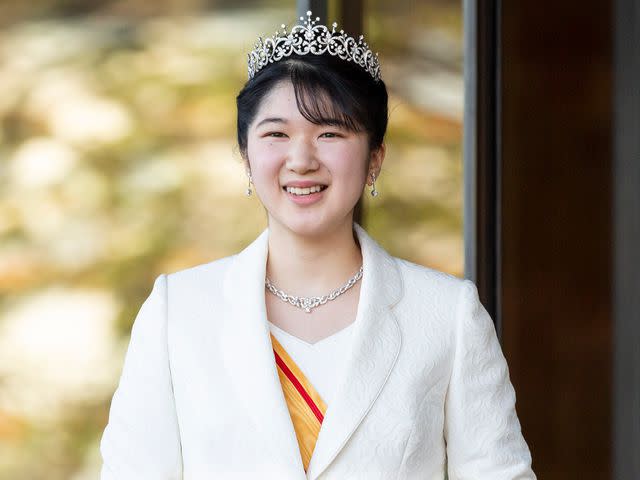
Born on Dec. 1, 2001, Aiko, Princess Toshi is the only child of Naruhito and Masako. She is currently ineligible to inherit the throne, as women are prohibited from doing so under Japanese law (though this law is the subject of debate; in a 2017 poll conducted by the Mainichi Shimbun, 68% of respondents were in favor of having an empress regnant).
Public duties begin at age 20 for Japanese royals. As such, Aiko's first royal outing was the 2022 New Year's Day celebration at Tokyo's Imperial Palace.
Aiko is majoring in Japanese language and literature at Gakushūin University, according to the Asahi Shimbun, and lives with her parents in the Imperial Palace. She raised silkworms in 2022, as is a tradition of the royal family, has three pets — a dog named Yuri and two cats, Mii and Seven — and enjoys athletic pursuits like tennis, badminton and volleyball.
Fumihito, Crown Prince Akishino
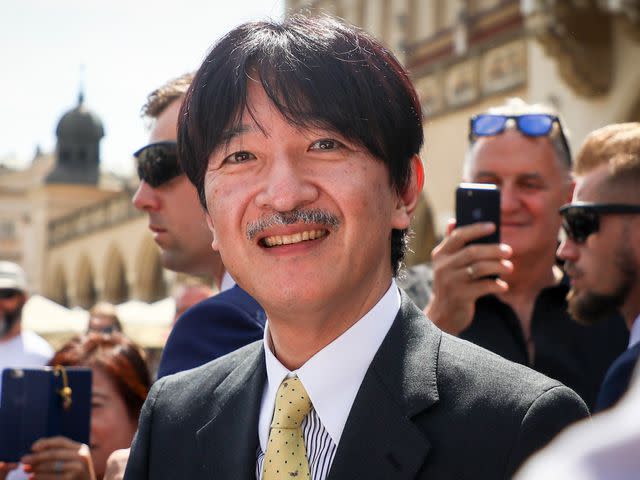
The younger brother of Naruhito, Fumihito, Crown Prince Akishino, is next in line for the throne. He was born on Nov. 30, 1965, in Tokyo and was given the royal title Prince Aya. He studied at Gakushūin University and at Oxford's St. John's College before receiving his doctorate in ornithology from the Graduate University of Advanced Studies in Japan.
He met his wife, Kiko, Crown Princess Akishino, while they were undergrads at Gakushūin. Their marriage in 1990 broke the precedent, as he was a graduate student at the time of his wedding and married before his older brother. Kiko was the second commoner to marry into the royal family after Empress Emerita Michiko. The crown prince and princess have three children: Mako Komuro, formerly Princess Mako, born in 1991; Princess Kako of Akishino, born in 1994; and Prince Hisahito of Akishino, born in 2006.
Due to the pandemic, his accession to crown prince and as next in line to the throne took place privately in 2020, per the BBC. He is the president of the Yamashina Institute for Ornithology and the Japanese Association of Zoological Gardens and Aquariums, among his other official duties.
Kiko, Crown Princess Akishino
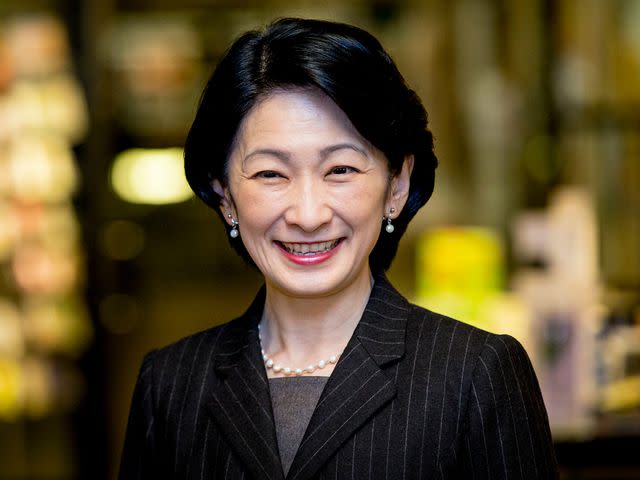
Crown Princess Akishino was born Kiko Kawashima on Sept. 11, 1966, in Shizuoka, Japan. Her father was a Tokyo native and professor emeritus at Gakushūin University. In 1967, her family moved to Philadelphia while her father studied at the University of Pennsylvania. They later moved to Vienna and to Tokyo; as a result, Kiko is fluent in Japanese, English and German.
She received undergraduate and graduate degrees in psychology from Gakushūin, where she also met her now-husband. The couple married while they were both graduate students, so she took on official duties while continuing her education, later receiving a Ph.D. in humanities from Ochanomizu University.
Along with her husband, Akishino's royal duties involve diplomatic visits overseas, and her patronages focus on children's and medical causes. She works closely with Deaf communities in Japan, having learned Japanese sign language, and is a sign language interpreter, according to the Asahi Shimbun.
"Together with the crown prince, I will pray for peace of people's daily lives at any time and fulfill my duties while supporting the emperor and empress," she told journalists on her 56th birthday in 2022, per the Japan Times.
Mako Komuro
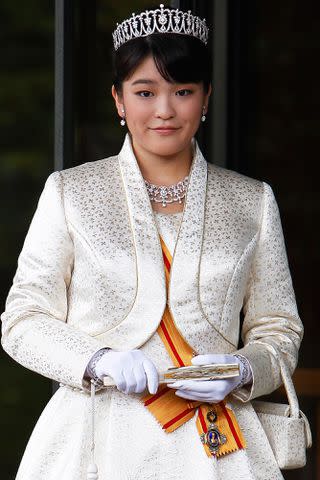
Born on Oct. 23, 1991, in Tokyo, Mako Komuro, formerly Princess Mako, is the oldest daughter of Crown Prince and Princess Akishino. Mako studied English at the University College Dublin and art history at the University of Edinburgh in Scotland before enrolling at Tokyo's International Christian University, where she met her future husband Kei Komuro.
The couple dated for a year before Kei proposed over dinner in December 2013, though they did not publicly announce their plans to marry until 2017. They continued their engagement as a long-distance relationship while Mako studied for her master's degree in an art museum and gallery studies at England's University of Leicester.
In 2017, Mako made headlines for her decision to give up her royal status, as Japanese law requires a princess to "leave the imperial family upon marriage to a commoner." Mako also turned down a $1.3 million payout that the Japanese government traditionally pays to women who lose their royal status when they marry.
Public backlash to Mako's engagement was so strong that it caused her father to withhold his approval of the marriage. The couple ended up postponing their wedding for four years, but later married in a small ceremony in October 2021; the Imperial Household Agency explained that the couple did not want to have a big wedding "because their marriage is not celebrated by many people."
"I am very sorry for the inconvenience caused and I am grateful for those … who have continued to support me," Mako said in a statement after their wedding. "For me, Kei is irreplaceable — marriage was a necessary choice for us."
After their low-key wedding, the newlyweds moved to New York City, where Komuro works at a law firm after graduating from Fordham University's law school. In April 2022, Mako reportedly began working as an unpaid volunteer at the Metropolitan Museum of Art.
Kei Komuro
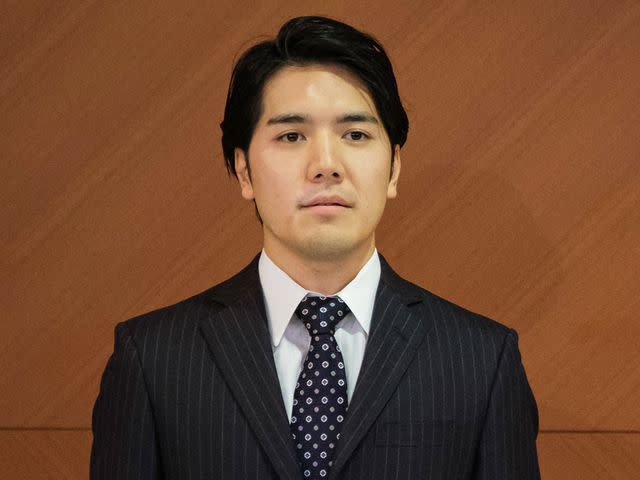
Kei Komuro, born in 1991, was raised in Kanazawa, Japan, before moving to Tokyo, according to the Japan Times. He and Mako met while attending a school event at a restaurant in Tokyo's Shibuya district. At the time, both were students at the International Christian University.
The two wed in a small ceremony in Japan. Their relationship received pushback from the public and local media, and shortly before their wedding, the palace announced that Mako was diagnosed with PTSD in the wake of media coverage."I love Mako. We only get one life, and I want us to spend it with the one we love," Kei told journalists on his wedding day. "I feel very sad that Mako has been in a bad condition, mentally and physically, because of the false accusations."
Weeks after their wedding, the couple relocated to N.Y.C., where Kei went to law school at Fordham University. He works for the law firm Lowenstein Sandler.
Princess Kako of Akishino
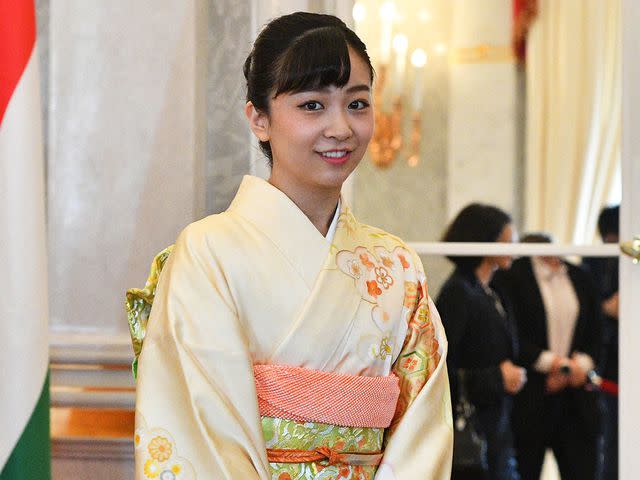
Born on Dec. 29, 1994, Princess Kako of Akishino is the middle child of the crown prince and princess. She was a competitive figure skater in primary school before enrolling at Gakushūin University, where most royal family members attend, though she later withdrew to study at the International Christian University.
Kako made her first formal appearance as an adult member of the imperial family on her 20th birthday in 2014. Four days later, she made her first public appearance at the annual New Year's Greeting event at the royal palace; with 80,000 visitors, it was the third-largest turnout since 1989, according to Nippon News. She's also taken after her mother by learning Japanese sign language.
After her older sister, Mako, left the royal family, Kako took on a heavier workload. She took over her sister's patronage and has participated in several public engagements. In December 2022, the Imperial Household Agency released a series of birthday portraits for the princess in honor of her 28th birthday.
Prince Hisahito of Akishino
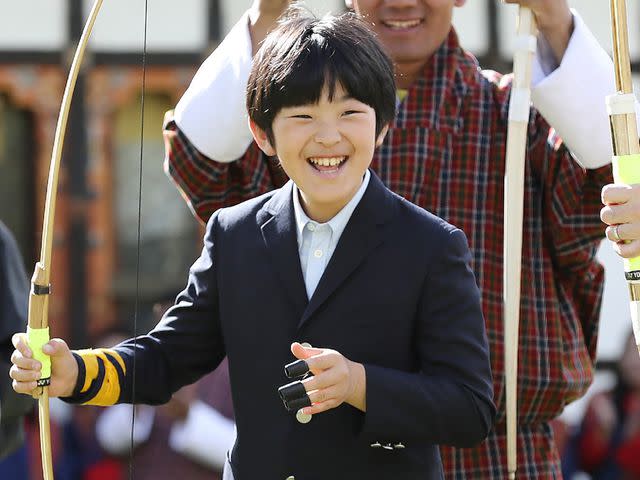
The youngest child and only son of the crown prince and princess of Japan, Prince Hisahito of Akishino, is second in the line of succession. He was born on Sept. 6, 2006, in Tokyo.
He is the first royal family member since World War II not to attend Gakushūin schools, opting for another university-affiliated elementary and junior high school. In 2022, Hisahito began studying at a competitive senior high school in Tokyo, where he plays badminton; he also studies dragonflies on his family's estate, according to Kyodo News.
In her birthday statements in September 2022, Crown Princess Kiko told journalists she hoped Hisahito would "be able to gain a broad global perspective" in the coming years, per the Japan Times.
For more People news, make sure to sign up for our newsletter!
Read the original article on People.

